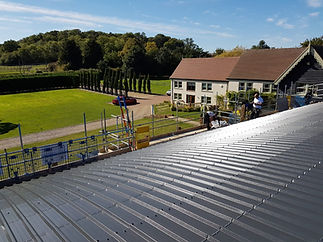Over 25 Years Experience
Proven Track Record
Local Experts
About Finn Industrial Roofing
We are a skilled industrial roofing specialist team that handles both one-off and scheduled maintenance contracts across Dorset, Bournemouth and Poole. Known for our reliable service, we're committed to excellence and ready to go the extra mile to ensure every roofing project exceeds expectations. Our comprehensive aftercare services ensure your roofing systems remain efficient, compliant, and well-maintained long after installation. Whether it's repairs, maintenance, or new installations, our expert team is here to help keep your roof secure and long-lasting with our metal roof sheets and more.
What We Offer
Why Choose Us?
-
Over 25 Years Of Experience: Among Bournemouth’s most trusted roofing companies.
-
Wide Service Area: Covering Portsmouth, Bournemouth, Southampton, Dorset, and beyond.
-
Accredited Professionals: Safecontractor, CITB and CHAS certified for your peace of mind.
-
Custom Solutions: Bespoke aluminium roofing tailored to your needs.
-
24/7 Availability: We’re here when you need us most.
-
Comprehensive Services: From new roofs to refurbishments and maintenance.
-
Competitive Pricing: High-quality services that fit your budget.

Composite Cladding
Double Metal
Single Skin Metal
Secret Fix
Standing Seam
Flat to Pitch Conversion
Low Pitch
Fibre Cement
Gutter Linings
Asbestos Cement Removal
Get Expert Roofing Solutions From A Trusted Industrial Roofing Company
Looking For Reliable, Long-Lasting Roofing Services? We've Covered What Sets Us Apart—Now It's Your Turn To Take The Next Step. Call Us To Discuss Your Needs!











